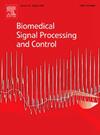单通道脑电睡眠分期的自适应多尺度卷积与局部注意
IF 4.9
2区 医学
Q1 ENGINEERING, BIOMEDICAL
引用次数: 0
摘要
睡眠分期是睡眠医学的一个重要组成部分,为睡眠障碍和更广泛的健康结果提供了不可或缺的见解。与多通道方法相比,单通道EEG睡眠分期是一种侵入性更小、更实用的方法。然而,考虑到脑电信号的复杂性和非平稳性,实现高分类精度仍然具有挑战性。在本研究中,我们提出了一个结合自适应多尺度卷积(AMSC)和局部注意机制的新模型。提出的AMSC模块捕获跨多个尺度的时间特征,使模型能够适应信号动态并专注于相关频段。这种适应性提高了对脑电图数据固有异质性的处理。局部注意力模块通过集中在信号中信息量最大的部分来改进特征提取,从而提高模型区分不同睡眠阶段的能力。我们的方法集成了归一化层、多层感知器(MLP)和Softmax分类器,以确保鲁棒学习和准确的阶段分类。公开可用的EEG数据集和自行收集的数据集的实验验证表明,所提出的模型优于当前最先进的方法。具体来说,我们的模型在Sleep-EDF数据集上达到了86.2%的总体准确率,在具有挑战性的N1阶段达到了59.1%的准确率。在我们自己收集的CQSH-OSSD数据集上,该模型的总体准确率达到79.4%,显示出跨不同数据源的强大泛化性能。提出的框架证实了将自适应卷积架构与基于注意力的特征增强相结合的潜力。它提高了基于单通道脑电图的睡眠分期的有效性。本文章由计算机程序翻译,如有差异,请以英文原文为准。
Adaptive Multi-Scale Convolution and Local Attention for single-channel EEG sleep staging
Sleep staging is a critical component of sleep medicine, providing indispensable insights into sleep disorders and broader health outcomes. Single-channel EEG sleep staging offers a less invasive and more practical alternative to multi-channel methods. However, achieving high classification accuracy remains challenging, given the complex, non-stationary nature of EEG signals. In this study, we propose a new model that combines Adaptive Multi-Scale Convolution (AMSC) and Local Attention mechanisms. The proposed AMSC module captures temporal features across multiple scales, enabling the model to adapt to signal dynamics and focus on relevant frequency bands. This adaptability improves handling of the heterogeneity inherent in EEG data. The Local Attention module refines feature extraction by concentrating on the most informative segments of the signal, thereby improving the model’s capability to distinguish among various sleep stages. Our approach integrates normalization layers, a Multi-Layer Perceptron (MLP), and a Softmax classifier to ensure robust learning and accurate stage classification. Experimental validation on publicly available EEG datasets and self-collected datasets shows that the proposed model surpasses current state-of-the-art methods. Specifically, our model achieves an overall accuracy of 86.2% on the Sleep-EDF dataset, with a notable 59.1% accuracy for the challenging N1 stage. On our self-collected CQSH-OSSD dataset, the model achieves an overall accuracy of 79.4%, demonstrating strong generalization performance across different data sources. The proposed framework confirms the potential of combining adaptive convolution architectures with attention-based feature enhancement. It improves the effectiveness of sleep staging based on single-channel EEG.
求助全文
通过发布文献求助,成功后即可免费获取论文全文。
去求助
来源期刊

Biomedical Signal Processing and Control
工程技术-工程:生物医学
CiteScore
9.80
自引率
13.70%
发文量
822
审稿时长
4 months
期刊介绍:
Biomedical Signal Processing and Control aims to provide a cross-disciplinary international forum for the interchange of information on research in the measurement and analysis of signals and images in clinical medicine and the biological sciences. Emphasis is placed on contributions dealing with the practical, applications-led research on the use of methods and devices in clinical diagnosis, patient monitoring and management.
Biomedical Signal Processing and Control reflects the main areas in which these methods are being used and developed at the interface of both engineering and clinical science. The scope of the journal is defined to include relevant review papers, technical notes, short communications and letters. Tutorial papers and special issues will also be published.
 求助内容:
求助内容: 应助结果提醒方式:
应助结果提醒方式:


